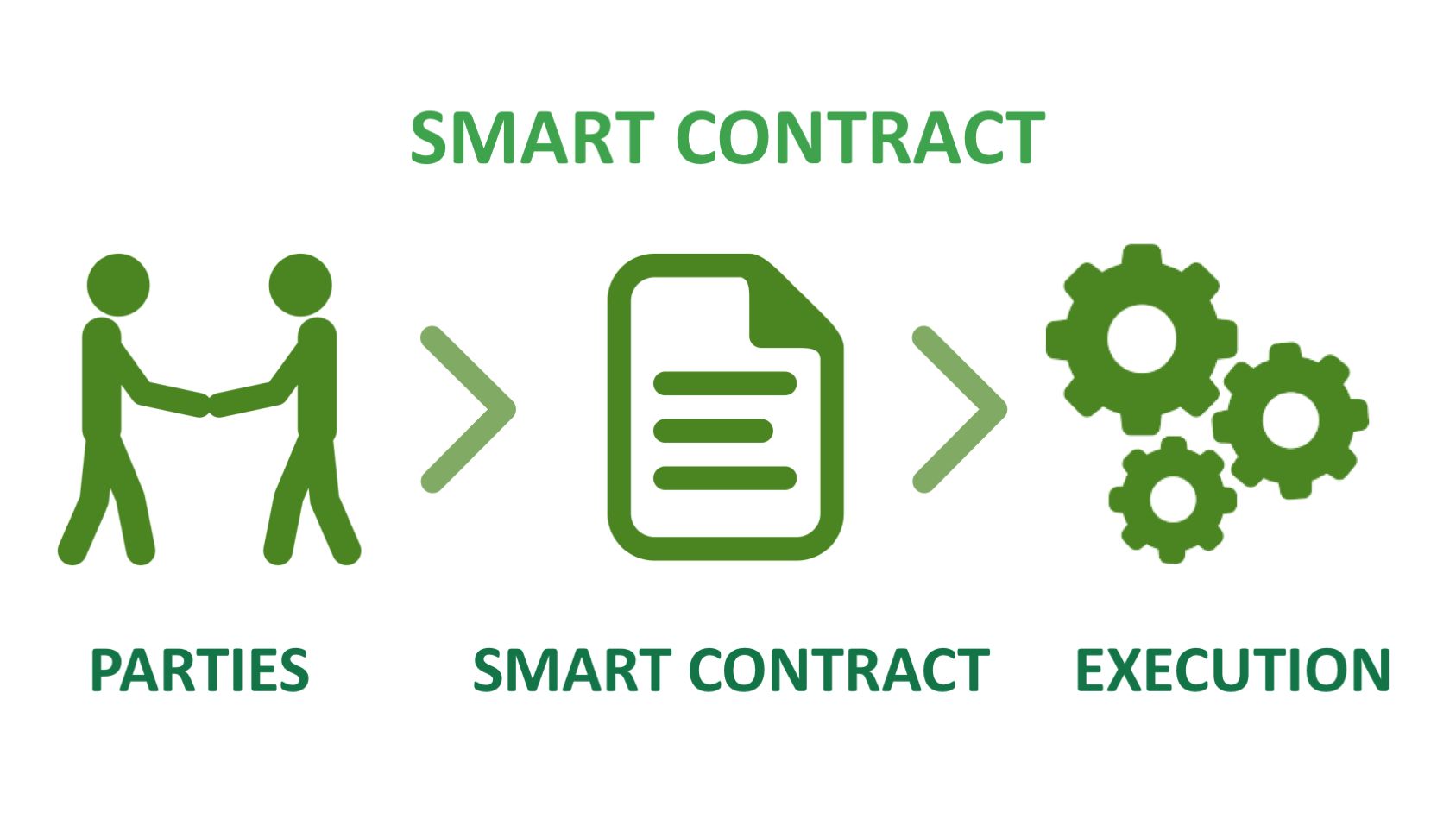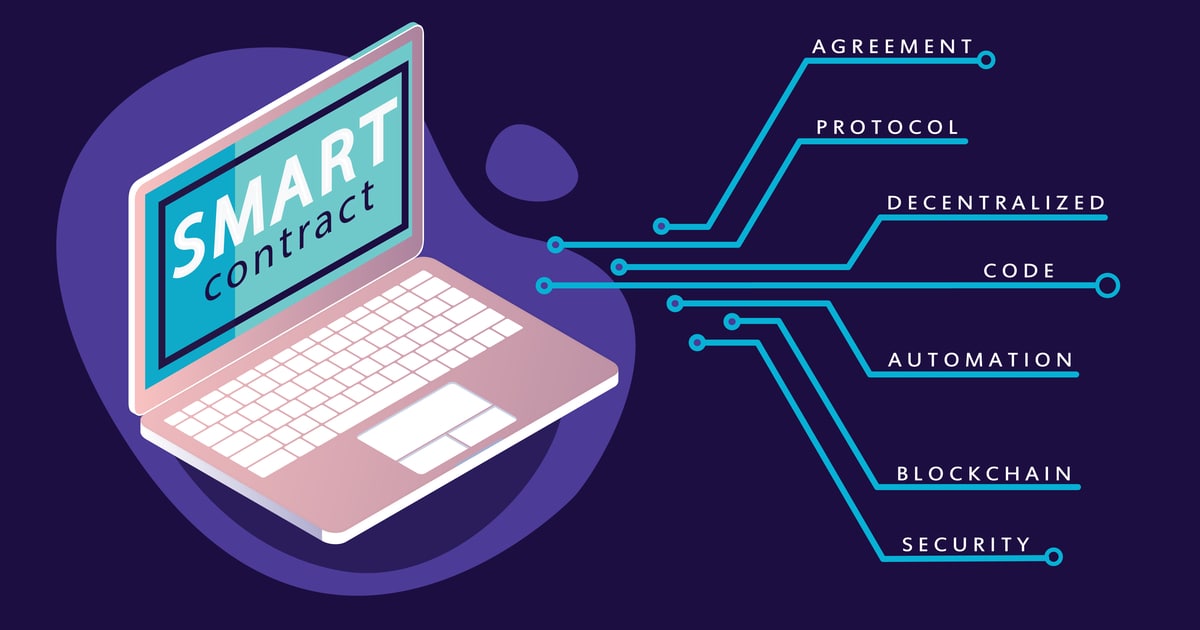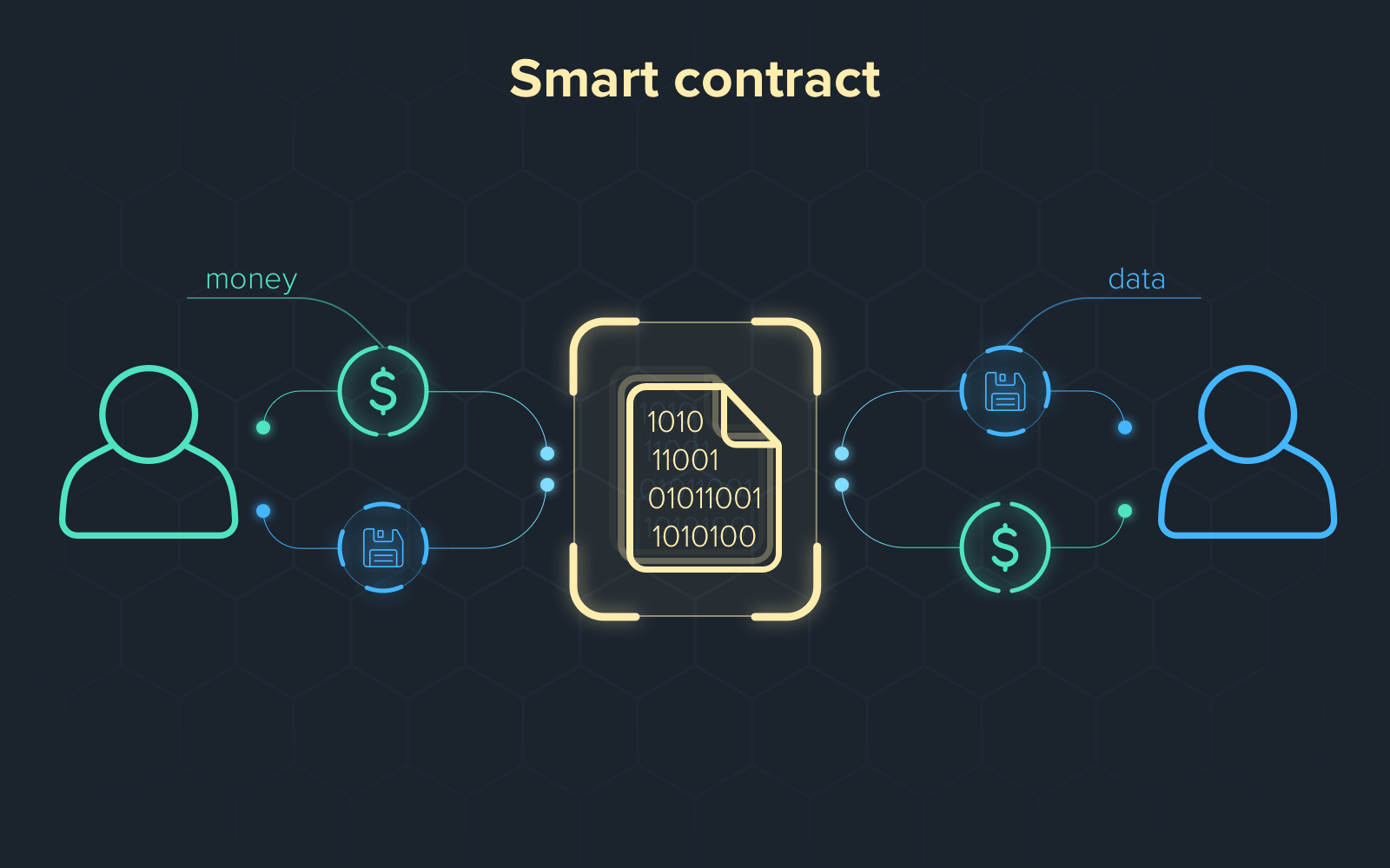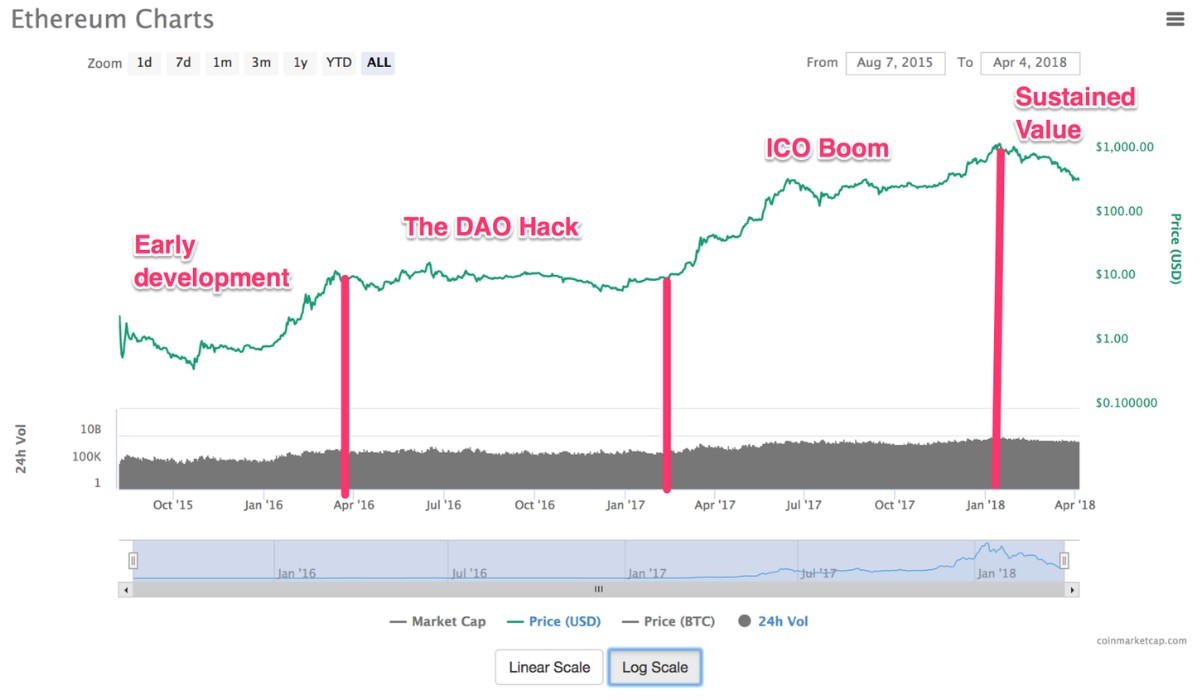Introduction
The rise of blockchain technology has revolutionized various industries, and one of its notable applications is the concept of smart contracts. Smart contracts, built on the Ethereum blockchain, have gained significant attention for their potential to automate and execute agreements without the need for intermediaries. As this technology becomes more prevalent, questions about patent ownership and its implications on the Ethereum blockchain arise.
In this article, we will delve into the world of smart contracts on the Ethereum blockchain and explore the topic of patent ownership. We will discuss the significance of patents in the technology industry, the role they play in the blockchain sector, and the potential impact of patent ownership on the Ethereum blockchain ecosystem. Additionally, we will examine the patent landscape for smart contracts and identify potential holders.
Understanding the concept of smart contracts is essential in grasping the significance of patents in this field. Smart contracts are self-executing agreements that run on the blockchain, specifically the Ethereum platform. These contracts are written in code, specifying the terms and conditions of an agreement and automatically executing them once the predetermined conditions are met. This eliminates the need for intermediaries, making transactions more efficient and secure.
Given the disruptive nature of smart contracts, it is crucial to recognize the role of patents in protecting intellectual property in the technology industry. Patents grant inventors exclusive rights to their inventions, preventing others from using, selling, or importing the patented technology without permission. In the context of smart contracts on the Ethereum blockchain, patents can offer legal protection and incentivize innovation.
However, the patent landscape in the blockchain industry is still emerging and presents unique challenges. Traditional patent systems may struggle to accommodate the decentralized and open-source nature of blockchain technology. This raises questions about the validity, enforceability, and potential infringement of smart contract patents. Consequently, alternative methods for protecting smart contracts, such as open-source licensing or standardization, have gained attention.
This article aims to shed light on the current state of patents in the context of smart contracts on the Ethereum blockchain. By providing insights into the patent landscape, potential patent holders, and the legal challenges surrounding smart contract patents, we can better understand the implications of patent ownership on this innovative technology.
The Concept of Smart Contracts on the Ethereum Blockchain
Smart contracts are a fundamental aspect of the Ethereum blockchain and have been hailed as a groundbreaking innovation in the world of technology and finance. These contracts are coded agreements that are self-executing, running on the decentralized Ethereum network. They eliminate the need for intermediaries and provide an efficient, transparent, and reliable way to enforce agreements.
Unlike traditional contracts that require legal interpretation and enforcement, smart contracts are created using computer code. They define the terms of an agreement, including the actions to be taken when specific conditions are met. These contracts are stored and executed on the Ethereum blockchain, ensuring immutability and tamper-proof record-keeping.
The Ethereum blockchain, with its programmable functionality, allows developers to build decentralized applications (DApps) using smart contracts. This opens up a world of opportunities for various industries, including finance, supply chain management, real estate, and healthcare. Smart contracts automate processes, eliminate the need for trust in intermediaries, and reduce the costs associated with traditional contract execution.
Smart contracts on the Ethereum blockchain are written in the Solidity programming language, specifically designed for developing smart contracts. Developers can define the contract’s functions, specify the conditions required for execution, and integrate external data and APIs. They can also incorporate business logic to automate complex processes and create secure and auditable agreements.
By utilizing the Ethereum Virtual Machine (EVM), smart contracts on the Ethereum blockchain can interact with other contracts and access the wealth of decentralized applications and data available on the network. This interoperability and integration potential make Ethereum a leading platform for smart contract development.
Smart contracts can serve a wide range of purposes. For example, they can facilitate real-time payment settlements, automate supply chain tracking, enable peer-to-peer lending, manage digital identities, or even establish decentralized organizations. The possibilities are vast, and the Ethereum ecosystem continues to inspire innovation and experimentation.
However, despite their many advantages, smart contracts are not without challenges. As they are coded agreements, they are prone to vulnerabilities and bugs. Once deployed on the blockchain, they are immutable and cannot be easily modified, making security and thorough testing crucial. Moreover, legal enforceability and regulatory frameworks in relation to smart contracts still require further development.
While smart contracts have the potential to revolutionize various industries and disrupt traditional practices, it is important to navigate their intricacies carefully. Understanding the concept of smart contracts on the Ethereum blockchain is crucial for recognizing their benefits, limitations, and future potential.
The Importance of Patents in the Technology Industry
Patents play a crucial role in the technology industry by incentivizing innovation, protecting intellectual property, and promoting economic growth. They grant inventors exclusive rights to their inventions, preventing others from using, selling, or importing the patented technology without permission. In the fast-paced and competitive technology sector, patents provide a means to safeguard and monetize new and inventive concepts.
One of the key benefits of patents is that they encourage investment and stimulate research and development. Inventors and companies are more likely to invest time, effort, and resources into developing innovative technologies if they have the assurance that they will be rewarded with exclusive rights. This leads to the creation of new products, services, and processes that drive technological advancement.
Patents also promote knowledge sharing and collaboration within the industry. By disclosing the details of their inventions in patent applications, inventors contribute to the collective knowledge base. This not only helps to advance the state of the art but also enables other inventors to build upon existing technology and drive further innovation.
Moreover, patents provide a competitive advantage to patent holders. They create barriers to entry, preventing competitors from easily replicating or imitating their inventions. This fosters a climate of innovation by giving inventors the time and space to capitalize on their investments and establish themselves in the market.
In the technology industry, patents are particularly vital due to the rapidly evolving nature of the field. Innovations can quickly become obsolete or be replaced by new technologies. Patents protect inventors from the risk of their creations becoming obsolete before they can commercialize and derive value from them.
Patents also serve as a valuable asset for companies, enabling them to license their technology to others for a fee. This generates additional revenue streams and can lead to fruitful collaborations and partnerships.
However, it is essential to strike a balance between patent protection and fostering innovation. Critics argue that patent thickets, overlapping patents, and overly broad patents can stifle competition and hinder technological progress. Striking the right balance between protecting inventors’ rights and ensuring a healthy and vibrant marketplace is a continuous challenge for patent systems worldwide.
In summary, patents are of utmost importance in the technology industry. They incentivize innovation, protect intellectual property, promote collaboration, and provide a competitive advantage. By encouraging investment in research and development, patents contribute to the advancement and growth of the technology sector.
The Role of Patents in the Blockchain Industry
As blockchain technology continues to gain momentum and disrupt various industries, the role of patents in the blockchain sector becomes increasingly significant. Patents play a crucial role in offering legal protection and incentivizing innovation in this evolving industry.
Firstly, patents in the blockchain industry provide inventors and companies with exclusive rights to their inventions. By obtaining a patent, individuals and organizations can prevent others from using, selling, or importing their patented blockchain technologies without their permission. This protection encourages inventors to invest time, money, and resources into developing groundbreaking blockchain solutions.
Moreover, patents in the blockchain industry promote collaboration and knowledge sharing. Patent applications require detailed descriptions of the invention, which are made publicly available upon approval. This disclosure of innovative blockchain technology assists in advancing the state of knowledge within the industry. It allows other inventors to build upon and improve existing blockchain solutions, driving further innovation and the development of new applications.
Patents also offer a competitive advantage in the blockchain industry. They provide legal protection against competitors attempting to replicate or imitate a patented blockchain technology. This exclusivity allows inventors and companies to establish themselves in the market and capitalize on their investments. It encourages further research and development by providing a secure environment for inventors to commercialize their blockchain inventions.
Furthermore, patents can serve as valuable assets within the blockchain industry. Patent holders have the option to license their technology to other companies and organizations. This creates additional revenue streams and fosters collaboration through licensing agreements and partnerships. By allowing others to leverage patented technologies, the blockchain industry can experience accelerated growth and increased adoption.
However, the role of patents in the blockchain industry also poses unique challenges. Blockchain technology, by nature, involves decentralized and open-source systems. These characteristics can present difficulties when patenting blockchain inventions. It questions the requirements of novelty and non-obviousness, as previous open-source contributions may already exist.
Moreover, the challenges associated with enforcing blockchain patents arise. The decentralized nature of blockchain networks can create jurisdictional complexities and difficulties in identifying infringing activities. This, along with the relatively nascent state of blockchain patent litigation, contributes to uncertainties and legal challenges in enforcing patent rights.
In summary, patents play a crucial role in the blockchain industry by providing legal protection, promoting collaboration, offering a competitive advantage, and serving as valuable assets. They incentivize innovation and encourage inventors and companies to invest in developing groundbreaking blockchain technologies. Nevertheless, the decentralized nature of blockchain and the challenges surrounding patent enforcement pose unique considerations for the industry.
The Patent Landscape for Smart Contracts on the Ethereum Blockchain
The patent landscape for smart contracts on the Ethereum blockchain is an area of growing interest and exploration. As this innovative technology continues to evolve, inventors and companies are seeking patent protection for their unique contributions to the field.
At present, the number of patents specifically related to smart contracts on the Ethereum blockchain is relatively small compared to other areas of technology. This is partly due to the decentralized and open-source nature of blockchain, which encourages collaboration and the sharing of information. Many developers and contributors to the Ethereum ecosystem favor open-source licensing and community-driven initiatives over traditional patent protection.
However, there are still companies and inventors actively seeking patent protection for their smart contract innovations. These patents can cover a wide range of aspects, including the underlying technology, unique implementations, and novel methods of executing smart contracts on the Ethereum blockchain.
One notable area of patenting activity in the smart contract domain is related to interoperability and integration with other systems. As the Ethereum blockchain allows for interactions between smart contracts and external data sources or APIs, inventors are exploring ways to secure intellectual property rights in this space. These patents aim to protect unique methods of integrating smart contracts with real-world data, traditional systems, or other blockchain networks.
Another aspect attracting patent attention is the development of security-focused solutions for smart contracts. Given the potential vulnerabilities and risks associated with coding contracts on the blockchain, inventors are seeking to protect novel security mechanisms to ensure the reliability and integrity of deployed smart contracts. These patents can cover various aspects, such as secure coding practices, encryption techniques, or auditing and monitoring solutions for smart contract execution.
It is worth noting that the patent landscape in the blockchain industry, including smart contracts on the Ethereum blockchain, is still evolving. Patent systems worldwide are grappling with the unique challenges posed by blockchain technology, and there are ongoing discussions about its compatibility with traditional patent frameworks.
Furthermore, the open-source nature of the Ethereum ecosystem and the preference for open collaboration pose questions about the role and effectiveness of patents in this space. Some argue that patents may contradict the ethos of blockchain technology, which emphasizes decentralization, transparency, and inclusivity.
Overall, while the number of patents specific to smart contracts on the Ethereum blockchain is currently relatively small, it is an area that is being actively explored and discussed. The patent landscape in this domain is expected to develop further as more inventors and companies recognize the potential value in securing intellectual property rights for their innovative contributions to smart contract technology.
Examining Potential Patent Holders on Smart Contracts
As the field of smart contracts on the Ethereum blockchain continues to grow, various entities are emerging as potential patent holders within this domain. These potential patent holders can include both individual inventors and companies that have made significant contributions to the development and implementation of smart contract technology.
Ethereum, the platform on which smart contracts operate, itself holds numerous patents related to its underlying technology. These patents cover aspects such as the consensus mechanism, virtual machine, and programming languages that enable the execution of smart contracts. The Ethereum Foundation, the non-profit organization behind Ethereum’s development, has been actively involved in filing and securing patent rights for its innovations.
In addition to the Ethereum Foundation, other technology companies and startups are actively pursuing patent protection in the smart contract space. These companies range from established blockchain-focused enterprises to traditional technology firms seeking to enter the emerging market. They may hold patents that cover various aspects of smart contract technology, including secure execution methods, interoperability solutions, or novel implementations.
Financial institutions and banking organizations have also shown interest in smart contract patents. As blockchain technology and smart contracts have the potential to revolutionize various aspects of finance, these institutions are exploring patent protection to safeguard their unique contributions. Their patents may focus on areas such as financial instrument creation, digital asset management, or automated payment settlement systems.
Additionally, research institutions and universities are actively engaged in exploring and developing smart contract technology. These academic entities may hold patents related to groundbreaking research, novel algorithms, or innovative approaches to executing smart contracts on the Ethereum blockchain. Their contributions to the field can significantly impact the future development of smart contract technology.
It is important to note that while some potential patent holders have actively pursued patent protection, others in the smart contract space prioritize open-source licensing and encourage collaboration within the Ethereum community. These individuals and organizations contribute to the development of smart contracts through open-source codebases and community-driven initiatives, rather than seeking exclusive patent rights.
The landscape of potential patent holders in the smart contract space is constantly evolving. As the technology advances and new applications emerge, more inventors and companies may seek to protect their intellectual property through patent filings. It is crucial to monitor the patent landscape to understand the entities involved and the potential implications of patent ownership on the future of smart contracts on the Ethereum blockchain.
Potential Implications of Patent Ownership on the Ethereum Blockchain
The ownership of patents in the context of smart contracts on the Ethereum blockchain can have several implications, ranging from positive advancements to potential challenges and controversies. Understanding these implications is crucial for the further development and adoption of smart contract technology.
One potential implication of patent ownership is the incentivization of innovation among inventors and companies. Patents provide exclusive rights and monetary incentives to the patent holders, encouraging them to invest resources in further research and development. This can lead to the creation of more advanced and feature-rich smart contract solutions.
However, the presence of patents can also create barriers to entry for other developers and startups. If key aspects of smart contract technology are patented, it may limit the ability of newcomers to enter the market and contribute to the ecosystem. This can hinder innovation and limit the growth of the Ethereum blockchain as a whole.
Another potential implication of patent ownership is the potential for licensing and collaboration opportunities. Patent holders can license their technology to others, allowing for the integration and utilization of their patented solutions. This can foster collaboration, accelerate development, and create diverse applications and use cases for smart contracts. It also serves as a potential revenue stream for patent holders.
However, concerns arise when patent owners impose restrictive licensing terms or demand excessive royalties for the use of their patented technology. This can hinder the widespread adoption and accessibility of smart contract solutions. It is important to strike a balance between protecting intellectual property and fostering an open and collaborative ecosystem.
The presence of patents in the smart contract landscape can also lead to legal challenges and controversies. Patent infringement disputes may arise, especially when there is uncertainty about the patentability and enforceability of blockchain-related inventions. The decentralized nature of the Ethereum blockchain can make it challenging to identify and track potential infringers, adding complexity to legal proceedings.
Furthermore, some argue that patent ownership contradicts the principles of decentralization and open-source development that many in the Ethereum community hold dear. Blockchain technology thrives on collaboration, innovation, and the sharing of information. Patents, on the other hand, can create exclusivity and restrict the free flow of ideas and solutions.
To counteract the potential negative implications of patent ownership, alternative approaches such as open-source licensing, standardization, or the use of patent pledges and defensive patent strategies have emerged. These approaches aim to balance the need for protection with the desire for openness and collaboration within the Ethereum blockchain ecosystem.
In summary, patent ownership on the Ethereum blockchain can have various implications, including incentivizing innovation, creating licensing opportunities, and fostering legal challenges and controversies. Striking the right balance between protecting intellectual property and promoting an open and collaborative ecosystem is crucial for the continued growth and development of smart contracts on the Ethereum blockchain.
Legal Challenges and Controversies Surrounding Smart Contract Patents
The emergence of smart contract technology on the Ethereum blockchain has brought about legal challenges and controversies surrounding the issue of patenting. The decentralized and open-source nature of blockchain presents unique complexities when it comes to the patentability and enforceability of smart contract patents.
One of the main challenges is determining the novelty and non-obviousness of smart contract inventions. The patent system requires that inventions be novel and non-obvious at the time of filing. However, with the open collaboration and rapid development in the blockchain community, it can be challenging to establish the novelty and non-obviousness of smart contract innovations.
Add to this the fact that blockchain technology is built upon the principles of decentralization and transparency. By design, it encourages collaboration and the sharing of information. This raises questions on whether certain aspects of blockchain technology, including smart contracts, can be considered patentable subject matter.
Furthermore, the enforcement of smart contract patents can be challenging due to the decentralized nature of the Ethereum blockchain. Identifying infringing activities and establishing jurisdiction can be complex when transactions occur across multiple jurisdictions and involve multiple parties. This can make it difficult for patent holders to protect their intellectual property rights effectively.
Controversies have also arisen regarding the potential implications of patent ownership in the blockchain community. Some argue that patents go against the spirit of blockchain technology, which emphasizes openness, collaboration, and decentralized decision-making. They believe that patents can hinder innovation, restrict access to technology, and impede the development of open-source projects.
Furthermore, concerns have been raised about patent trolls and their potential impact on the blockchain industry. Patent trolls are entities that acquire patents with no intention of using them to innovate or develop products. Instead, they seek to extract licensing fees or initiate lawsuits, potentially hindering the progress and growth of blockchain projects.
To address these challenges and controversies, various strategies have emerged within the blockchain community. Some innovators opt for open-source licensing models, encouraging collaboration and the sharing of technology without imposing restrictive patent rights. Others promote the use of defensive patent strategies, wherein patents are acquired to deter potential infringement lawsuits rather than for aggressive enforcement.
Moreover, standardization efforts have been made to establish industry-wide technical standards for blockchain technology. This can help reduce the risk of patent infringement and promote interoperability without negatively impacting the spirit of collaboration and open-source development.
In summary, legal challenges and controversies surround smart contract patents in the blockchain industry. Questions regarding patentability, enforcement, and the compatibility of patents with the principles of blockchain technology have yet to be fully resolved. Balancing the need for intellectual property protection with the desire for open collaboration and innovation is an ongoing challenge for the industry.
Alternatives to Patents for Protecting Smart Contracts on the Ethereum Blockchain
While patents have traditionally been the primary means of protecting intellectual property, alternative approaches have emerged within the Ethereum blockchain community to protect and foster innovation in the realm of smart contracts. These alternatives recognize the unique challenges posed by patents in the decentralized and collaborative nature of the blockchain ecosystem.
One prominent alternative to traditional patent protection is the use of open-source licenses. By releasing smart contract code under open-source licenses, developers grant others the freedom to use, modify, and distribute their code. This approach encourages collaboration, enables community-driven development, and promotes the sharing of expertise and innovation. Projects such as the Ethereum ecosystem often rely on open-source principles to foster an environment of transparency and accessibility.
Another alternative is the establishment of technical standards and protocols for smart contracts. Industry-wide standards make it easier for developers to create interoperable smart contracts, reducing the risk of patent infringement and enabling broader adoption. By defining common standards, the Ethereum community can ensure compatibility, enhance security, and facilitate a more cohesive ecosystem.
Utilizing defensive patent strategies is another alternative approach. Rather than asserting patents aggressively, companies and inventors acquire patents primarily for defensive purposes to ward off possible infringement claims. Defensive patents serve as a deterrent against patent trolls or opportunistic entities that may seek to assert patents against innovative projects. This approach aims to protect the broader ecosystem from litigation while still maintaining some level of patent protection.
Moreover, the use of public and decentralized registries can help establish prior art and patent-free zones. By documenting and sharing information about existing smart contract innovations, developers can establish a collective pool of knowledge that acts as a defense against patent claims. Such registries can provide a tangible source of evidence to challenge the novelty and non-obviousness requirements of patent applications.
In addition, alternative licensing frameworks, such as the Creative Commons licenses, can be used to protect the intellectual property rights of smart contract developers. These licenses allow creators to maintain some level of control by specifying usage rights, attribution requirements, and restrictions on commercial use. This approach strikes a balance between protection and collaboration, ensuring that developers’ work is acknowledged and respected while allowing others to build upon it.
It is worth noting that these alternative approaches are not mutually exclusive and can be combined to create a multifaceted strategy for protecting smart contracts. By embracing open-source principles, promoting collaboration, establishing technical standards, and utilizing defensive patent strategies, the Ethereum blockchain community can work towards fostering innovation, reducing legal complexities, and ensuring a level playing field for all participants.
Conclusion
The concept of smart contracts on the Ethereum blockchain holds immense potential to revolutionize various industries, bringing about increased efficiency, transparency, and security. Patents play a significant role in protecting intellectual property, incentivizing innovation, and providing exclusive rights to inventors and companies. However, the decentralized and collaborative nature of the blockchain ecosystem presents unique challenges and controversies regarding patent ownership.
The patent landscape for smart contracts on the Ethereum blockchain is still evolving, with a relatively small number of patents compared to other technology sectors. Potential patent holders include the Ethereum Foundation, technology companies, financial institutions, and research institutions. However, the preference for open-source licensing, standardization efforts, and defensive patent strategies have also emerged as alternative approaches to protect and foster innovation.
Legal challenges surrounding smart contract patents include determining novelty and non-obviousness, enforcing patents in a decentralized environment, and potential conflicts with the principles of openness and collaboration within the blockchain community. Balancing the need for protection with the desire for an open and inclusive ecosystem remains a significant consideration.
It is essential for the Ethereum blockchain community to explore alternative approaches, such as open-source licensing, technical standards, defensive patent strategies, and public registries, to address the challenges and controversies surrounding smart contract patents. By embracing these alternatives, the community can promote collaboration, interoperability, and the sharing of knowledge, driving further innovation and ensuring a vibrant and inclusive ecosystem.
Overall, the future of smart contracts on the Ethereum blockchain relies on finding a harmonious balance between protecting intellectual property and fostering an environment that encourages open collaboration and innovation. By tackling the legal challenges and controversies, the Ethereum community can continue to lead the way in advancing smart contract technology and shaping the future of decentralized applications.

























